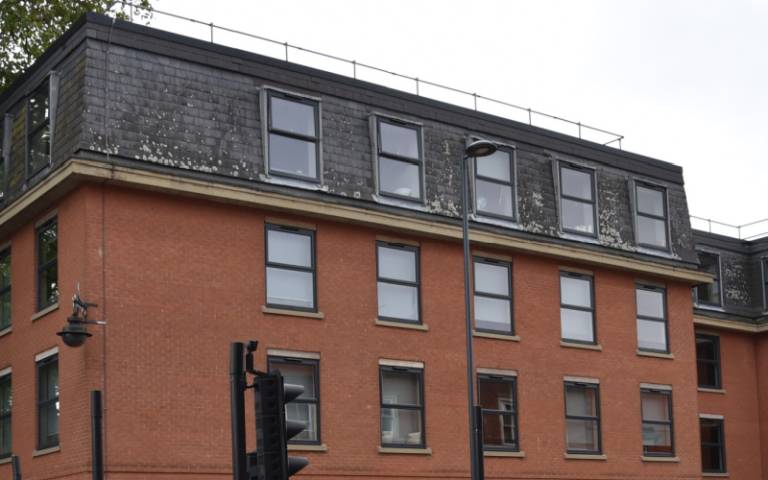Pilot study investigates the link between permitted development housing and health
19 May 2023
Results from a new study, led by Ben Clifford, looking at the relationship between housing created under permitted development (a deregulated planning route in England) and health have been published.

The pilot study, supported by funding from Impact on Urban Health, invited residents of housing created through the conversion of commercial buildings to residential use in the London boroughs of Hillingdon, Hounslow, Lambeth and Southwark to complete a questionnaire survey and participate in a research interview to better understand residents, their self-reported health, wellbeing and demographics, and characteristics of their housing and wider neighbourhood that are known to influence health and wellbeing. 218 people completed the survey and 41 interviews were conducted.
Mental wellbeing was measured using the survey questions defined by the Warwick-Edinburgh Mental Wellbeing Scales (WEMWBS). In terms of mental wellbeing, the proportion of survey respondents with a WEMWBS score that indicated low wellbeing was higher than the UK average (23% of survey respondents compared to 15% UK average) and the proportion with a score that indicates high wellbeing was lower than the UK average (6.8% of survey respondents compared to 15% UK average).
In terms of housing problems, the six most commonly reported problems on the survey were:
- a shortage of space (46% of respondents),
- street noise (40%),
- noise from neighbours (26%),
- pollution (from traffic or industry) (16%),
- vandalism or crime (16%)
- and a lack of fresh air in the dwelling (14%).
In terms of thermal comfort, 92% reported being able to keep comfortably warm during cold winter weather (this question related to the ability to keep the home warm, rather than the cost of doing so) but only 63% were able to keep comfortably cool during hot summer weather (63%), suggesting potential issues with these PD homes overheating.
A high proportion of the cohort reported not having a single window they would open (14%) with only 68% reporting at least one window they could easily see outside through. 6.4% of the cohort reported not having any of the seven amenity types listed on the survey (park or green space, shop to buy food, public transport access, primary school, GP surgery, cafe or restaurant or leisure centre) within a ten-minute walk of their accommodation.
Looking across all project data, the study found the following housing design and locational features to be important:
- Having sufficient space in the accommodation
- Having a home where thermal comfort could be assured year-round (with particular issues keeping cool being associated with some PD housing)
- Having fresh air, ventilation, and windows allowing in sufficient natural light and through which there was a view of the outside world
- Not having excessive levels of noise from neighbours and from the street outside
- Having access to open or greenspace
- Living in walkable neighbourhoods with good access to local amenities
- Living in a home in which you felt safe (considering both the security of the housing and its location)
The study was led by Dr Ben Clifford from the UCL Bartlett School of Planning, working with Dr Helen Pineo from the UCL Bartlett School of Environment, Energy and Resources. Dr Clifford said:
“There is extensive existing evidence linking various elements of housing quality with health. Although a range of existing studies have identified design quality issues with housing units created through PD, this has been based on analysis of plans, site visits and expert interviews rather than engaging residents of such housing.
The findings from this study give a useful insight into potential associations between housing and health and wellbeing, and the impacts of the particular design features associated with many permitted development homes. Our data support a number of recommendations which have the potential to improve housing quality and so the health of residents of homes created under permitted development rights.
This was, however, only a small scale exploratory study. We will now investigate these issues in greater depth through a larger study funded by the National Institute for Health and Care Research.”
See more information about the NIHCR project.
 Close
Close

